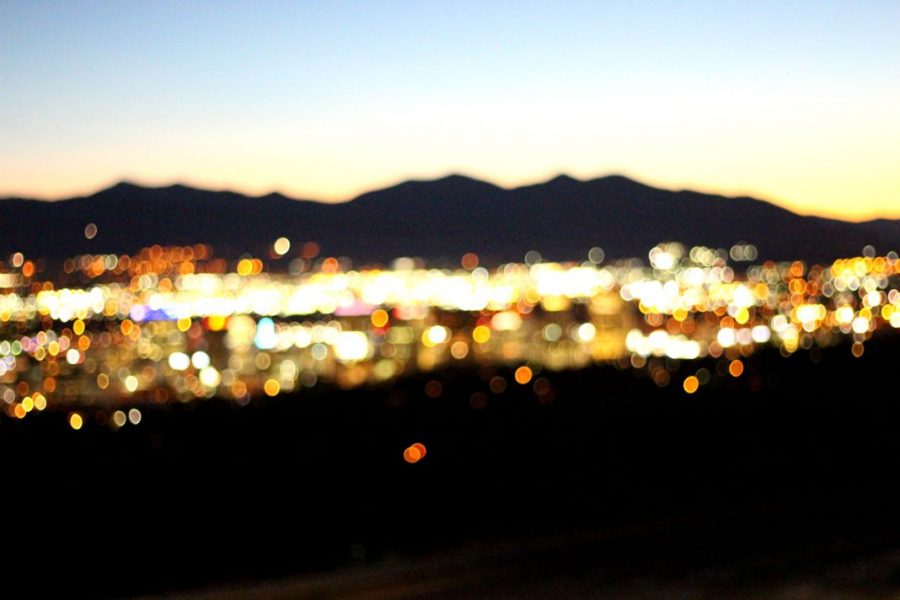The University of Utah has been striving for a greater sense of safety on campus at night, while still maintaining environmental sustainability and efficiency standards. One of these initiatives involves lighting on campus at night, which has raised questions of whether the lights are sustainable, how they can be more sustainable and if the lights on campus are worth the cost and light pollution in proportion to their benefit.
The University of Utah has always had a focus on the health and safety of its students, and one important aspect of that is safety on campus at night. In order to make campus safer, light fixtures are a must so that students can navigate campus when it’s dark outside without feeling as though they’re in danger.
With this progress towards safety, however, environmental concerns must also be taken into account. Recent movements in the field of environmental sustainability have been promoting a dark sky, with a focus on reducing light pollution and sky glow as part of the Dark Sky initiative. This reduction in sky glow can be achieved with the use of specially approved light fixtures.
The goal of proper lighting across campus was one of the Presidential Task Force on Campus Safety’s main goals this past year, and they asked for and received $125,000 in pursuit of that goal.
In attempting to understand what parts of campus are the most dark and feel the least safe, Occupational Environmental Health and Safety (OEHS) sponsors an after-dark stroll through campus in which participants comb the U’s campus in order to find the areas of greatest concern.
“The walk occurs in the fall after the sun sets, the leaves are full and the moon is hidden — a night of ‘optimal darkness’” James Stubbs, associate director of OEHS, said in a recent U press release. “We also identify uneven pavement, broken light fixtures, areas of perceived darkness versus actual darkness and landscape elements that interfere with the light or could provide a potential hiding place. We then analyze the data found in order to find solutions to the problems.”
Inefficient lights are ones that distribute uncontrolled light and that can have negative consequences for human health as well as the surrounding environment. A combination of concerns including health-related problems, wildlife, the environment and sustainability efforts are all associated with light pollution.
According to the International Dark Sky Association, types of light pollution include:
- Glare – excessive brightness that causes visual discomfort
- Skyglow – brightening of the night sky over inhabited areas
- Light trespass – light falling where it is not intended or needed
- Clutter – bright, confusing and excessive groupings of light sources
A main issue of inefficient light fixtures is that much of the light is spilling into the sky rather than focusing on the areas that actually need light. It’s wasteful of electricity and is less effective overall.
80% of the world’s population lives under sky glow. In Europe and the United States around 99% of the population cannot see much of the starry night sky.
The earth has always had a natural cycle which its ecosystems and creatures rely on, in which the night and day determine when organisms should be doing specific things. Light pollution blurs the lines between day and night and the level of lightness when it is supposed to be dark can have a significant effect on sleep schedules for both humans and other animals in the environment.
“Light pollution is wasted energy in the form of artificial light that impairs one’s ability to see the night sky,” said Bill Leach, sustainability projects coordinator with Facilities Management, in the U’s press release. “It’s not as simple as just turning off the lights in a campus setting. It’s not just about getting rid of lights but it’s controlling light, working to make sure it’s going where we want it to go and not outside of its parameters.”
The U has been working on installing light fixtures that help minimize the contribution to sky glow through spectrum intensity, color temperature and shielding. Currently they are focusing on replacing light fixtures with LED lights, which provide a more linear path of light and are much easier to control.
A point of contention about the movement towards sustainable lights has been raised due to concerns about whether or not street lights actually reduce crime.
According to the International Dark Sky Association, lighting doesn’t necessarily reduce crime rates. In fact, many studies have shown that most criminal activity occurs during daylight hours. If anything, lighting is primarily just to make people feel comfortable as they walk around.
The National Institute of Health conducted a study in which they turned off street lights during intervals of the night in communities in England and Wales. Their results showed that street lights being off did not cause any changes in crime rates and had little negative effect in general. The study also revealed that citizens in these communities experienced better sleep, but slightly greater fear of the dark.
Despite the controversy, the University of Utah Safe U initiative believes that the street lights have enough benefit to keep them around. Rather than eliminating them, they plan to continue striving to make the lights more efficient and balance the focus on sustainability with safety on campus.
c.macdonald@ustudentmedia.com


